Whole Brain Microscopy Facility
The Whole Brain Microscopy Facility (WBMF) is directed by Dr. Denise Ramirez, Ph.D. and is part of UT Southwestern's Department of Neurology and the Peter O'Donnell, Jr. Brain Institute.
The facility is particularly well-suited to advance the study of traumatic brain injury, as well as other neurological and psychiatric disorders. We utilize cutting-edge microscopy strategies to evaluate neuropathology across micro-, meso-, and macro-scales of inquiry. These techniques enable the tracing of neuronal projections from injured sites to their long-range targets, allowing crucial and previously unfeasible studies into the altered connections established by neurons following brain injury.
Denise Ramirez, Ph.D.
Available Equipment
The WBMF provides access to a unique set of high-throughput microscopes and histology resources for UT Southwestern and external researchers, ideally suited for collection of high-content neuroscience data.
Please remember to acknowledge your usage of our facility resources in your publications. For the Whole Brain Microscopy Facility, please use RR:SCR_017949.
Serial Two-Photon Tomography
Whole-Slide Imaging
Other Equipment
The facility houses two state-of-the-art TissueCyte 1000 multi-photon microscopes with integrated precision vibratomes for automated sectioning and imaging of the entire volume of a mouse brain in approximately 10 hours. Typical resolutions are approximately 1 micron in the x-y dimensions and 25 microns in the z dimension. Brains from mice with nearly any endogenous fluorescent label can be imaged, including transgenic animals expressing fluorescent proteins such as GFP, tdTomato or brains injected with fluorescent axonal tracers, or brains that have been chemically labeled to identify vasculature or amyloid plaques. Perfusion-fixed mouse brains are delivered to the facility for imaging by our personnel.
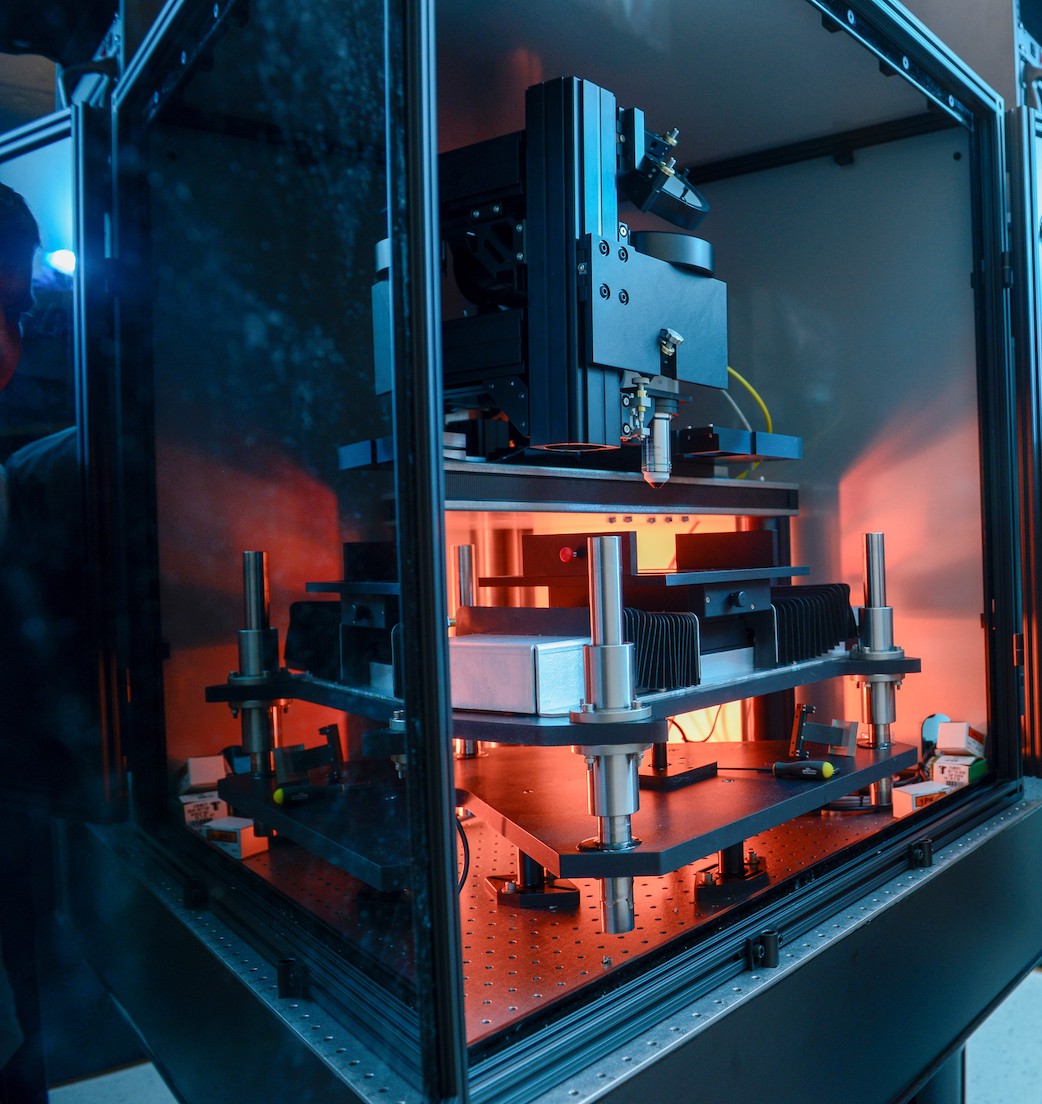
TissueCyte 1000
We also offer a fully developed, automated image analysis pipeline for use on whole brain volumetric images collected on the TissueCyte. The pipeline includes pixel classification using supervised machine learning, registration of fluorescent signals into the field standard average mouse brain atlas (Allen Institute for Brain Science Common Coordinate Framework, v3.0) and automated quantification of fluorescent signals of interest across every brain region (see Ramirez et al., Multiphoton Microscopy 2019). The fully automated nature of the TissueCyte serial two photon system coupled with the robust analysis pipeline is amenable to processing large numbers of experimental animal brains (mouse and rat). Automated analysis services are performed by our full-time computational scientist.
Hamamatsu NanoZoomer 2.0 HT and S60
The NanoZoomer systems are digital slide scanners that convert glass slides into high-resolution digital data by high-speed scanning (approximately 60 sec for a 15x15 mm brightfield sample at 20X). These user-friendly scanners are designed to process up to 60 standard size slides (for the S60) and 210 slides (for the 2.0-HT) automatically with outstanding brightfield image quality at 20X or 40X resolution. The S60 system can also accomodate large format 2in. by 3in. slides. The Z-stack function of the NanoZoomer S60 allows whole slide multilayer scanning with the ability to navigate through multiple focus planes. The whole slide images can be viewed in the free NDPView2 software. After training, users can schedule time to scan their own slides or WBMF staff can scan your slides for you for an additional fee.
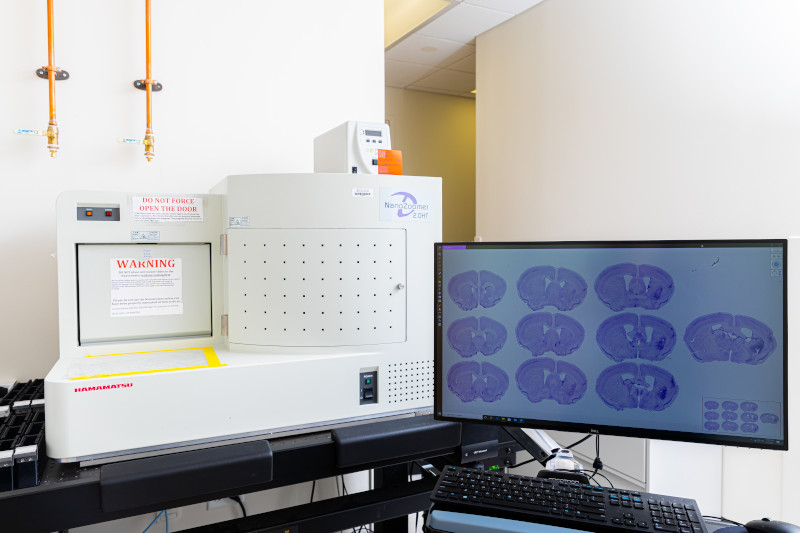
Hamamatsu Nanozoomer 2.0-HT
Zeiss Axioscan.Z1 and Axioscan 7
The Zeiss Axioscan systems are digital slide scanners that convert glass slides into high-resolution digital data by high-speed scanning in both brightfield and fluorescence modes. Up to 100 slides can be scanned automatically. The machine features sensitive cameras, highly corrected optics and single wavelength LED light sources for exceptional image quality in your virtual slides and short exposure times to reduce photobleaching. Both standard (26 mm x 76 mm) and large-format (52 mm x 76 mm) slides can be scanned at 10X,20X, or 40X resolution. The Axioscan.Z1 can accommodate up to 4 independent fluorescent signals on each slide, in the commonly used blue, green, red, and far-red emission bands. The Axioscan 7 can additionally accommodate a 5th channel in the near-infrared range for fluorophores such as Cy7 or Alexa 750. The images can be viewed in the free ZenLite software. After training, users can schedule time to scan their own slides or WBMF staff can scan your slides for you for an additional fee.
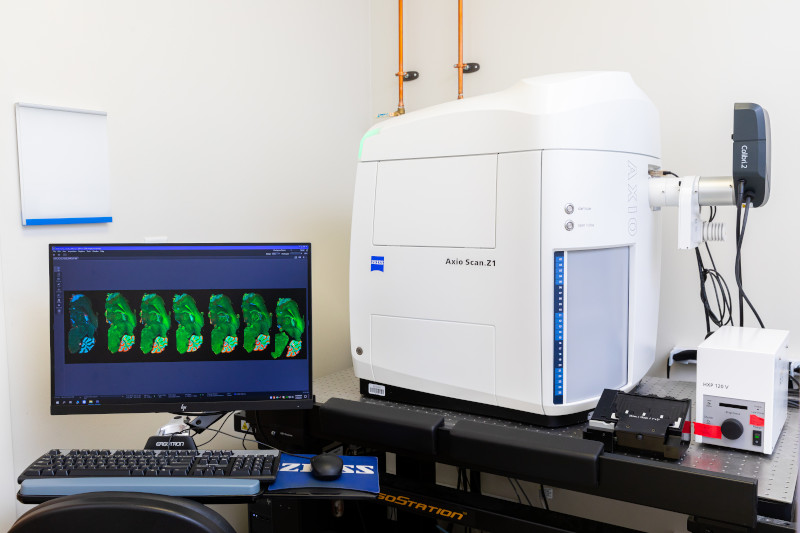
Zeiss Axioscan.Z1
Epifluorescence Microscopes and Sectioning
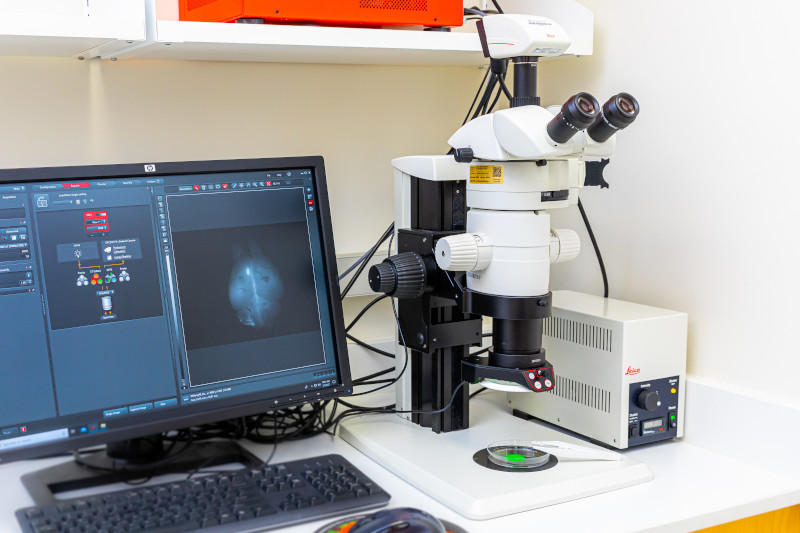
The WBMF also offers access to a fluorescence stereomicroscope (Leica MZ10F) and upright epifluorescence microscope (Zeiss Axioscope.A1), both with digital monochrome cameras, as well as high-quality Leica sectioning equipment (CM1950 cryostat, SM2010R sliding microtome, and VT1200 vibrotome).
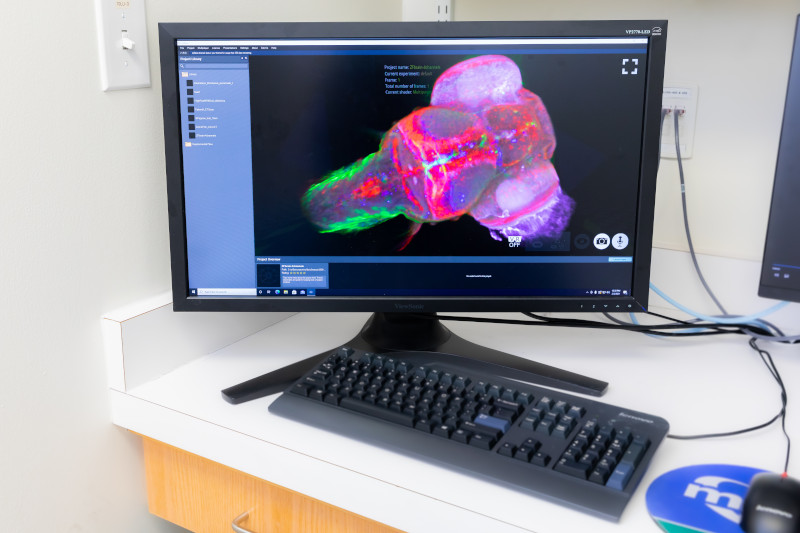
We have two powerful workstation computers available for use running MBF Bioscience’s Stereo Investigator and Neurolucida 360 software packages for offline stereological analysis, neuron tracing, and 3D rendering of large, whole-brain datasets. The systems can also be utilized to view and process large image files generated on the slide scanners in our facility. We also have a dedicated workstation available for BioHPC cluster access.
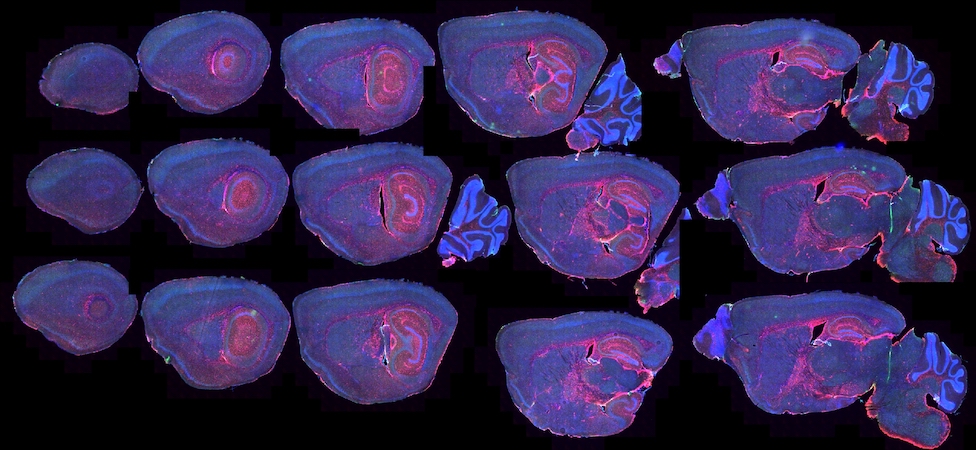
Triple immunostaining of cell type specific markers NeuN, GFAP and Iba1 in mouse brain serial sections performed by WBMF
Histology Services
- Frozen serial brain sectioning using cryostat or microtome
- General histological staining such as H&E, Nissl/cresyl violet, or Luxol Fast Blue
- Immunostaining
We stock a panel of commonly used neuroscience antibodies directed against NeuN, GFAP, Iba1, CD31, MBP, and TuJ1/Beta III tubulin, or we can optimize a staining protocol and detection method for your experiment.
iLab
All of our equipment scheduling and service requests are handled online through our lab management software platform, iLab. Contact Denise Ramirez for more information on setting up your iLab account as an internal or external user of the facility. If you have an existing iLab account set up for another core, it can be utilized to gain access to our core services as well.
BioHPC
The Whole Brain Microscopy Facility is fully integrated with the state of the art cluster computing resources available through UT Southwestern’s BioHPC. Usageof BioHPC to transfer and store large datasets generated in the facility is highly recommended. All UT Southwestern O’Donnell Brain Institute (OBI) Investigators can gain access to BioHPC resources. Please contact Denise Ramirez for further information on setting up your BioHPC account.
Please remember to acknowledge your usage of our facility resources in your publications. For the Whole Brain Microscopy Facility, please use RRID:SCR_017949.

